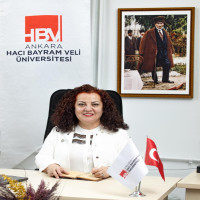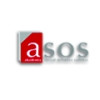Editorial
Research Article
Aim & Scope
Anemon Journal of Social Sciences of Muş Alparslan University is a peer-reviewed international journal that publishes original and qualified works with a scientific approach in the fields of social sciences and human sciences. The Journal is published bimonthly in February, April, June, August, October and December starting from 2018 by Mus Alparslan University.
anemon focuses on, but not limited to the following topics: business, economics, educational sciences, finance, fine arts, history, international relations, linguistics, literature, philosophy, political science, psychology, sociology and theology, etc. anemon is a journal that allows for geographic diversity without making any discrimination between the writers, referees, editorial board members and advisory board members.
Author Guidelines
anemon is published bimonthly in February, April, June, August, October and December starting from 2018 by Mus Alparslan University. The purpose of the journal is to make contributions to publishing qualified academic studies in social sciences and humanities.
The articles that are published in the journal cannot be published or presented anywhere else unless permission is granted from the editorial board. The articles that are published either partially or completely cannot be used anywhere else unless reference is given. The articles that are sent to the journal has to be authentic, not previously published or sent to be published. The authors of the articles have to have a consensus regarding the order of the authors' names in the article.
If you download the “sample article” that was prepared according to spelling rules and format of the Journal of anemon from our website through the link for authors to help you prepare the article, this will save your time and facilitate the preparation process. You can also prepare your article by saving this sample as a template on the Microsoft Word program.
· The articles should be in MS Word 2007 or higher version.
· The layout has to be custom-designed A4 paper (210 x 297 mm). The file format has to be MS Word. The font has to be Times New Roman or a similar one with a size of 10. The file has to have single-line spacing. 6 nk space should be left before and after each paragraph. Page margins have to be 2 cm on the top and 1.5 cm for all the other sides. The pages have to be numbered.
· The articles should include the name(s), surname(s), institutional title(s), institution name(s), e-mail address(es), and ORCID of the author(s). In addition, the corresponding author has to be indicated in the articles.
· The title of the article has to be consistent with the content and must reflect the content in the best way possible. The title has to be boldface with a font size of 13. The first letter of all the words has to be uppercase. The title has to be left-aligned. The articles should have an English title with the same properties.
· The article needs to include an “Abstract” at the beginning not less than 75 words nor longer than 120 words summarizing the content in the most precise and concise way. The abstract must not include references, figures, and table numbers. Leaving a space under the abstract, the author has to add keywords including at least 3 and utmost 5 words. The keywords have to be consistent with the content and should be comprehensive. Similarly, the articles have to include an English title, keywords, and abstract.
· anemon is published in Turkish and English. However, each issue may include articles written in other languages unless they exceed one third of the journal. The articles written in other languages have to have Turkish and English titles, keywords, and abstracts in addition to those written in its original language.
· The works that are presented in any symposium or congress can be published after specifying the name, place and the date of the congress. The works (BAP, TUBITAK, Word Bank ect.) that are supported by a research organization or fund have to indicate the name of the supportive organization and the number of the project.
· The articles should be organized as introduction, body, and conclusion. Subtitles and lower-level titles must have a font size of 11 (12 nk before and 6 nk after) and be left-aligned.
· Formulas and equations should be written via Math Type or Word Equation Editor.
· The study has to comply with grammatical rules. The latest Turkish Language Association Spell Check has to be employed regarding the use of punctuation, spelling of the words, and abbreviations. The text is expected to be clear and simple. No expressions out of purpose and scope must be included in the work. The valid scientific methods have to be employed to prepare the article. The content, purpose, scope, justification, etc. of the study have to be provided as much as needed in a certain order.
· An article is expected to include abstract, sections of the main text, references, and appendices (if there is any) respectively. An article has to have an “Introduction” and “Conclusion” sections. The “Introduction” is definitely expected to include the purpose, importance, period, scope, data methodology, and outline of the study. If it is necessary for the subject to be dealt with, literature review can be given in this section as well. The “conclusion” needs to be in compliance with the study’s purpose and scope. It needs to be given generally and concisely. The points that are not mentioned within the text must not be included in “conclusion”. Headings, titles, and subtitles can be used to organize the text.
· Tables/Figures should be numbered and given with their titles. No vertical lines must be used to draw the tables. Horizontal lines can only be used to separate the subtitles within the table from each other. Table/Figure number has to be at the top left-aligned and non-Italic. The name of tables/figures has to be written with each word having its first letter uppercase. In addition, tables/figures have to comply with black and white print. If there is anything in the table that requires reference, the references must be given at the bottom of the table with in-text reference format.
· Headings, titles, and subtitles can be used to ensure an ordered information transfer. All the other titles except for the title of the article have to have a font size of 11. First-level titles should be uppercase but boldface; the first letters of all the words in the second-level titles should be uppercase and not boldface; and only the first letters of the words in the third-level titles should be uppercase, and these titles have to be italic. In addition, the titles have to be organized with 6 nk before and after the title.
1. First-Level Title
1.1. Second-Level Title
1.1.1. Third-level Title
· The citation format is APA (American Psychological Association) Style 6th Edition. The authors have to follow the spelling principles and format specified by American Psychological Association in American Psychological Association Publication Manual regarding both quotations and bibliography. For detailed information: http://www.apastyle.org/learn/tutorials/basics-tutorial.aspx
(i) Reference to a book:
Stopford, M. (1997). Maritime Economics. New York: Routledge.
(ii) Translated book:
Davison, A. (2006). Türkiye’de Sekülerizm ve Modernlik. Tuncay Birkan (Trans.). İstanbul: İletişim Yayınları.
(iii) Reference to a chapter in an edited book:
Esen, Ö., & Aydın, C. (2018). Tunisia. In: S. Özdemir, S. Erdoğan, & A. Gedikli (Eds.), Handbook of Research on Sociopolitical Factors Impacting Economic Growth in Islamic Nations (pp. 68-94). USA: IGI Global.
(iv) Reference to a journal publication:
Esen, Ö. (2016). Security of the energy supply in Turkey: Prospects, challenges and opportunities. International Journal of Energy Economics and Policy, 6(2), 281-289.
(v) Two authors:
Aydin, C., & Esen, Ö. (2018). Does the level of energy intensity matter in the effect of energy consumption on the growth of transition economies? Evidence from dynamic panel threshold analysis. Energy Economics, 69, 185-195.
(vi) Theses and dissertations:
Esen, Ö. (2013). Sürdürülebilir Büyüme Bağlamında Türkiye’nin Enerji Açığı Sorunu: 2012-2020 Dönemi Enerji Açığı Projeksiyonu. Doctoral Dissertation. Erzurum: Atatürk University.
(vii) Internet Based Sources
IATA (2016). Annual Reports Review. (15.10.2017), Retrieved from https://www.iata.org/about/Documents/iata-annual-review-2016.pdf
· In-text references have to be indicated in brackets where relevant.
(i) For single author: (Surname, Date of Publication: Page Number)
(ii) For multiple authors: (Surname et al., Date of Publication: Page Number)
· A paper prepared in accordance with these conditions should not exceed 10 pages, excluding References and Annexes.
· The manuscripts that comply with the publication principles of anemon are passed through plagiarism checking. The journal uses the iThenticate software to detect instances of overlapping and similar text in submitted manuscripts. If the similarity level is above 5%, the manuscript is not accepted for publication.
· The articles are sent through Online Application System for the first step of the publication. An automatically-sent confirmation message is sent to your e-mail address upon the completion of the application. For further information, please contact the editor via http://dergipark.gov.tr/anemon.
Ethical Principles and Publication Policy
Ethical Principles
Scientific Research Ethics
- Scientific methods are used in obtaining, analyzing, interpreting and reaching the data. Non-scientific results cannot be used as research results.
- Author(s) must adhere to the national and international agreements during research period and must obtain permission from the competent authorities.
- The data obtained in the studies must be used in the manner/form permitted by the authorities. It is essential that data, which must not be shared, remain confidential.
- Researchers are obliged to inform the relevant persons and institutions about the problems that may occur after research done. Each researcher has the right not to participate in research due to these unintended consequences.
Publication Ethics
- Persons who do not contribute to the study during scientific research and writing should not be cited as authors.
- The author(s) must avoid situations such as irresponsible authorship, plagiarism, junk science, multicasting, segmentally publications, biased source, biased publication, and human-animal ethics.
- The author(s) must follow the citation system stated in the journal during the writing phase of the manuscript.
- Unpublished or un-presented works should not be cited in the manuscripts.
- All or part of any work cannot be published without permission or citation (plagiarism is not allowed).
- The author(s), if any, must state the financial sources of the study.
Referee Ethics
Referee(s);
- must be experts in the fields of subjects of the manuscript.
- is (are) obliged to objectively and clearly his/her criticism. He/she must not act in accordance with his / her personal interests / opinions and, if necessary, refuse to act as a referee.
- should take into consideration the texts are personal during the evaluation process and should not share the texts with third parties.
- should not transfer information from the manuscript for their own work and should not seek any academic / personal interest.
- should provide clear and detailed reasons for the articles to be rejected.
- should also take into account the journal's scientific research and publication ethic rules.
Editorial Ethics
Editor (s):
- is obliged to appoint at least two referees appropriate to the subject of the candidate manuscripts.
- must ensure communication between the referee(s) and the author in charge, taking into account the blind review process.
- must maintain their relations in a transparent and objective manner without discrimination between any authors and referees.
- must not use their position for their own individual and academic interests.
- must provide clear and detailed justifications for the manuscripts they will reject.
- must also consider scientific research, publication and review ethics.
Publication Principles
Peer Review Process
- The papers that are sent to anemon are subjected to preliminary assessment by the Editorial Board to see whether the work complies with the principles of the journal. The papers that are out of the scope of the journal or do not comply with the format of a scientific text either in terms of content or style are either rejected or demanded to be corrected prior to peer-review process. Academic objectivity and scientific quality are the most important criteria for the assessment of the articles that are submitted to be published.
- The articles that comply with the publication principles of anemon are sent to two reviewers who are known for their studies in the relevant field. anemon Journal employs double-blind review system in which the names of neither the reviewers nor the authors are disclosed in any of the phases of the process. Reviewer reports are saved for five years. If one of the reviewers gives positive feedback while the other gives negative feedback, the article is either sent to a third reviewer or Editorial Board examines the reviewer reports to make the final decision.
- The authors submitting papers to anemon take into account the criticisms and suggestions of the reviewers and the Editorial Board. The authors also have the right to object to the points with which they disagree. In the reviewing process, the publications of people with academic titles are only reviewed by academics of either an equal or a higher degree.
- Assessment process of anemon may sometimes take long periods of time due to undesired reasons. Normally, preliminary assessment by the editor takes a week while reviewer’s assessment period takes 8 weeks. However, reviewer assessment process may get longer when reviewers do not respond on time or in cases of appointing a new reviewer and so on.
- The author/authors submitting papers to anemon is/are considered to have accepted the aforementioned reviewing conditions and process of the journal.
- The copyrights of the works that are decided to be published (accepted) in anemon are transferred to Muş Alparslan University.
Editorial Principles
- anemon is an international peer-reviewed journal that publishes authentic and qualified works with a scientific approach in the fields of social sciences. It is published to contribute to raising the quality of the social sciences studies, development of methods and practices, to strengthen the communication between theoretical and practical studies, and to enrich the literature.
- anemon supports all the authentic and qualified scientific studies in the social sciences field including business, economics, educational sciences, finance, fine arts, history, international relations, linguistics, literature, philosophy, political science, psychology, sociology and theology etc. It publishes new and authentic works to offer the knowledge produced by scientific circles for the benefit of academics and public.
- The works that are sent to anemon must be either an authentic work to eliminate a lack in the literature or a review assessing the previously-published works and suggesting relevant, new, and noteworthy opinions.
- The texts that are sent to anemon include articles, translations, and book promotions. For the translated texts, publication permission of the owner of the article and the source text are required.
- Publication languages of anemon are Turkish and English. However, each issue may include articles written in other languages unless they exceed one third of the journal.
- Before academic studies submitted to anemon, they should be proofread and edited by native the language-speaking editors related to language used in the paper. This should also be documented (excluding study prepared in Turkish language).
- The works that are sent to anemon must not be published previously anywhere. They have to be ready for publication. The papers that have previously been presented in a scientific meeting can be sent to the journal if it is clearly indicated.
- anemon is regularly published six times a year, in February, April, June, August, October and December by Muş Alparslan University.
- anemon is dont charge submission, processing or publication fees for submitted articles. All expenses are covered by Muş Alparslan University.
- No copyright payment is made for the papers that are sent to anemon. The copyrights of the works that are published in the Journal are transferred to Muş Alparslan University Journal of Social Sciences (anemon).
- Scientific and legal liabilities of the articles published in anemon belong to the authors.
- All the opinions and ideas indicated in the articles that are published in anemon are authors’ personal opinions and do not reflect the opinions of the Journal or the affiliated institutions by any means.
- The works that are sent to anemon are sent to TUBITAK ULAKBIM’s DergiPark System (UDS) in electronical environment. This system can be accessed via http://dergipark.gov.tr/anemon under the link “User Page/New Submission”. After registering in the system and submitting the paper, the developments regarding the reviewing process and reviewer reports can be followed by the authors.
Price Policy
Dergimizde yazarlardan herhangi bir ücret talep edilmemektedir. Yine yazar veya hakemlere herhangi bir ücret ödenmemektedir.
Indexes
Journal Boards
Editor-in-Chief

Editors






 Web
Web





2005 KTÜ Fen Edebiyat Fakültesi Matematik Bölümü
2007 KTÜ Eğitim Fakültesi Matematik Eğitimi Tezsiz Yüksek Lisans
2016 KTÜ Eğitim Bilimleri Enstitüsü Matematik Eğitimi Doktora



Physical Education, Sport and Physical Activity for Disabled People Physical Education and Play







Ortadoğu'da etnik ve dini grupları çalışır. Seküler ve İslamcı grupları çalışmakla birlikte özel olarak Irak'taki Seküler ve İslamcı Kürt gruplar çalışmaları içinde yer alır.

Turkish Language Editor

English Language Editor



Telecollaboration & Virtual Exchange, Intercultural Interactions among Student Teachers of English, Intercultural Communicative Competence, Learner Autonomy
Kurdish Language Editor

Ortadoğu'da etnik ve dini grupları çalışır. Seküler ve İslamcı grupları çalışmakla birlikte özel olarak Irak'taki Seküler ve İslamcı Kürt gruplar çalışmaları içinde yer alır.
Layout Editor
Statistics Editor

Assistant editor

Secretariat

Editorial Board

Lisans, yüksek lisans ve doktora: eğitim programları ve öğretim.
Eğitim programları ve öğretim bilim dalı profesörü



Prof. Dr. Fügen Durlu Özkaya graduated from Ankara University and received her PhD in Food Engineering. For the past 18 years, she has been conducting academic studies in the field of Gastronomy and Culinary Arts and is currently a faculty member at Ankara Hacı Bayram Veli University. Her research interests include food science, gastronomy education, sustainable gastronomy, sensory analysis, product development, traditional Turkish culinary culture, and food safety. She has published numerous articles, book chapters, and conference papers in national and international journals, and has served as a principal investigator and researcher in various scientific projects, contributing to the advancement of the gastronomy discipline.




I am a professor of chemistry education. I have been teaching courses mainly on research methods in education and teaching and learning of science and chemistry at the secondary level. My research interests include teacher training, curriculum evaluation, how students learn in science/chemistry, undergraduates’ understandings of chemical ideas in thermodynamics, context-based teaching, problem-based learning, trends in science/chemistry education, and teaching science/chemistry to visually impaired students.
I have served in IUPAC (International Union of Pure and Applied Chemistry - www.iupac.org) Committee on Chemistry Education as a titular member (2008-2015) and chair (2016-2017). Currently, I am representing Turkey as a national representative in the same committee since 2018.
I am also a member of some national and international organizations serving in science or chemistry education as well as taking active roles such as board memberships and administrative duties.


Prof. Dr. Ömer Alanka, 1981 yılında Erzurum’da doğdu. Ankara Üniversitesi İletişim Fakültesinden 2005 yılında mezun oldu. Atatürk Üniversitesi İletişim Fakültesinde 2005 yılında Araştırma Görevlisi olarak göreve başladı. 2008 yılında Atatürk Üniversitesi Sosyal Bilimler Enstitüsü Gazetecilik Anabilim Dalında Yüksek Lisansını tamamladı. 2009 tarihinde Ege Üniversitesi İletişim Fakültesine Araştırma Görevlisi olarak atandı. 2012 yılında Ege Üniversitesi Sosyal Bilimler Enstitüsü Gazetecilik Anabilim Dalında “Görüntünün Ontolojisi ve Kavramsal Fotoğraf” başlıklı tezi ile Dr. unvanını aldı. 2012 yılında Atatürk Üniversitesi İletişim Fakültesinde Arş. Gör. Dr. Unvanı ile çalışmaya devam etti. 2014 yılında Atatürk Üniversitesi İletişim Fakültesinde Yrd. Doç. Dr. Unvanını aldı. 2018 yılında Gazetecilik ve Medya Çalışmaları alanında Doçentlik unvanını aldı. 2022 yılında Hatay Mustafa Kemal Üniversitesi İletişim Fakültesine Doç. Dr. olarak görev aldı. 2023 yılında Hatay Mustafa Kemal Üniversitesi İletişim Fakültesinde Prof. Dr. olarak atandı. 2023 tarihinden bu yana Hatay Mustafa Kemal Üniversitesi İletişim Fakültesi Dekanı olarak görev yapmaktadır. Alanka, akademik görevlerinin yanı sıra Bilişim Anabilim Dalı Başkanlığı, Gazetecilik Bölüm Başkanlığı, Dekan Yardımcılığı ve Dekanlık gibi idari görevleri de yerine getirdi. Alanka, Atatürk Üniversitesi Açık ve Uzaktan Öğretim Fakültesinde Yeni Medya ve Gazetecilik bölümünü kurup koordinatörlüğünü yürüttü. Ayrıca Alanka, Atatürk Üniversitesi Dijital Dönüşüm ve Yazılım Ofisinde Yürütme Kurulu Üyeliğinde de görev almıştır. Alanka, Hatay Mustafa Kemal Üniversitesi’nde Senatörlük ve Rektörlük Yönetim Kurul Üyeliği ve Hatay Mustafa Kemal Üniversitesi Kurma ve Yaşatma Vakfı Üyeliği görevlerini de yerine getirmektedir. Çok sayıda yüksek lisans ve doktora öğrencisi yetiştiren Alanka’nın çalışma alanları arasında sinema çalışmaları, dijital dönüşüm, sayısallaşma, medya çalışmaları, kitle iletişim sistemleri vb. yer almaktadır. Alanka'nın ulusal ve uluslararası düzeyde çok sayıda kitap, makale, sempozyum ve proje çalışmaları bulunmaktadır. Alanka evli ve iki çocuk babasıdır.



(Prof. Dr.) Amasya University
Doç. Dr. Kaliya Kulaliyeva | Kırgızistan-Türkiye Manas Üniversitesi | kaliya.kulaliyeva@manas.edu.kg | ORCID: 0000-0003-2755-7880
Kaliya Kulaliyeva, Kırgızistan’ın Çüy Bölgesinde 1972’de doğmuştur. 1997’de Bişkek Sosyal Bilimler Üniversitesi Kırgız Dili ve Edebiyatı Bölümünden mezun olmuştur. 2004’te Kırgız Devlet Üniversitesinde Kırgız Halk Edebiyatı ve Kırgız Edebiyatı alanında Manas Destanı ile Kutadgu Bilig’de Düşünce ve Edebî Benzerlikler konusunda doktora tezini savunmuştur. 1999’dan buğüne kadar Kırgızistan-Türküye Manas Üniversitesinde çalışmaktadır. Halk Bilimi, Kırgız Edebiyatı, Kırgız Dili Öğretimi alanında bir çok araştırma, ders ve çeviri kitapları yaymlanmıştır.
Önemli çalışmaları: Manas Destanı’nın Tematik Dizini I. 7 Kitap (2019-2022); Baldarga Kırgız Tili serisi. 3 Kitap (2021); Manas eposu menen Cusup Balasagındın Kutadgu Bilig dastanındagı ideyalık-korkomdük paralellder (2013); İş kagazdarın kıgız tilinde cürgüzüü (2013, 2016); Türkıstanda Büyük İsyan 1916. B. Maksutov (2013, 2018) Çeviri M.Gümüşle birlikte.
Önemli projeleri: Kırgız destanlarının tematik dizinleri: Kococaş; Er Töştük; Canış, Bayış; Kurmanbek; Er Tabıldı destanlarının tematik diizini (KTMÜ, KC Milli Bilimler Akademisi ve K.C. Üniversiteleriyle ortak proje üyrütücüsü, 2021-2022 yy.); Manas Destanı’nın Tematik Dizini I. (KTMÜ ile K.C. Milli Bilimler Akademisinin ortak projesi üyrütücüsü, 2018-2019 yy.); Türk Dünyası Değerleri. Lingvokültürel Sözlük Projesi üyesi. (KTMÜ, 2016-2018 yy.).
Özgeçmiş ve Eğitim:
2019: Türk Tarih Kurumu “Bilim Kurulu” üyeliğine seçildi.
2013: H.Ü. Türkiyat Araştırmaları Enstitüsü’ne “Profesör” olarak atandı (14.08.2013).
2012: Türkiyat Araştırmaları Enstitüsü Müdürü oldu (25.01.2012).
2010: TKAE, Türk Kültürünü Araştırma Enstitüsü Yönetim Kurulu Üyeliğine seçildi.
2006: Tarih Bölümü'nde "Doçent" kadrosuna atandı (06.12.2006).
2006: "Osmanlı Kurumları ve Medeniyeti Tarihi" alanında "Doçent" unvanı aldı (08.05.2006).
2004: H.Ü. Türkiyat Araştırmaları Enstitüsü Müdür Yardımcılığı görevine atandı.
1998: İLESAM, Türkiye İlim ve Edebiyat Eseri Sahipleri Meslek Birliği Yönetim Kurulu Üyeliğine seçildi.
1998: Hacettepe Üniversitesi Edebiyat Fakültesi Tarih Bölümü'nde Yardımcı Doçent Kadrosuna atandı. Aynı yıl Tarih Bölümü Başkan Yardımcısı oldu.
1997: Paris I Üniversitesi’nde (Université de Paris I, Panthéon-Sorbonne) "çok iyi" derece ile "Tarihte Doktor" unvanı aldı (27.11.1997).
1995: Burs süresinin sona ermesi üzerine Fransa'dan dönerek Hacettepe Üniversitesi Tarih Bölümü'ndeki görevine başladı.
1993: Dil kurslarını takiben kayıt yaptırdığı Paris I Üniversitesi (Université de Paris I, Panthéon-Sorbonne) Bizans ve Bizans Sonrası Yakın Doğu Tarihi Araştırmaları Bölümü’nde DEA (Diplôme d'Etudes Approfondies) derecesi aldı.
1990: 1988 yılında başladığı Doktora eğitimini yarıda bırakarak Hacettepe Üniversitesi burslusu olarak "Dil ve Doktora" eğitimi amacıyla Fransa'ya gitti.
1988: H. Ü. Sosyal Bilimler Enstitüsü Tarih Anabilim Dalı'ndan "Tarihte Bilim Uzmanı" (MA) derecesi aldı.
1987: H. Ü. Edebiyat Fakültesi Tarih Bölümü'nde “araştırma görevlisi” olarak çalışmaya başladı.
1987: Türk Tarih Kurumu'nda “uzman yardımcısı” olarak çalıştı.
1985: H. Ü. Sosyal Bilimler Enstitüsü Tarih Anabilim Dalında Yüksek Lisans (MA) eğitimine başladı.
1985: Bir yıl İngilizce Hazırlık Sınıfı okuduktan sonra H.Ü. Edebiyat Fakültesi Tarih Bölümü'nden Lisans düzeyinde mezun oldu.
Yabancı Dil: Fransızca, İngilizce.
Akademik Çalışmalar:
I. Tezler :
Yüksek Lisans (Hacettepe Üniversitesi, Tarih Bölümü, Ankara):
Hicri 983 (1575-1576) Tarihli Mufassal Tahrir Defterine Göre Bozok Sancağında İskân ve Nüfus, H. Ü. Sosyal Bilimler Enstitüsü, Tarih Anabilim Dalı, Bilim Uzmanlığı (Master) Tezi, Ankara, 1988.
DEA: Diplôme d’Etudes Approfondies (Université de Paris I, Panthéon-Sorbonne, Fransa):
Les recueils de lois coutumières ottomanes: le manuscrit de Munich TURC 111, Paris I Universitesi (Université de Paris I Panthéon-Sorbonne), Histoire et Archéologie du monde byzantin et post-byzantin, Paris, 1993.
Doktora (Université de Paris I, Panthéon-Sorbonne, Fransa):
La fixation par écrit des lois ottomanes et le rôle des codes de lois. Etude accompagnée de l'édition du manuscrit de Munich Turc 111 (XVe-XVIe siècles). Paris I Üniversitesi (Université de Paris I Panthéon-Sorbonne), Paris, 1997.
II. Yayınlar:
a. Kitap:
1. Koç, Yunus, XV. Yüzyılda Bir Osmanlı Sancağı’nın İskân ve Nüfus Yapısı, Kültür Bakanlığı Yay., Ankara, 1989.
2. Koç, Yunus - Fatih Yeşil, Nizam-ı Cedit Kanunları, Türk Tarih Kurumu Yay., Ankara, 2012.
3. Koç, Yunus, Bozok 1575 -İskân ve Nüfus-, Ankara 2021, Net Kitaplık.
b. Kitap/Kitap Bölümü Editörlüğü:
1. Koç, Yunus, (Yayına Hazırlayan), Hilmi Ziya Ülken, Seçme Eserler I, Ziya Gökalp, İstanbul, 2007, Türkiye İş Bankası, Kültür Yay.
2. Koç, Yunus, (Serdar Sağlam, Cahit Gelekçi ile birlikte Yayına Hazırlayan), I. Türkiyat Araştırmaları Sempozyumu, 25-26 Mayıs 2006: Bildiriler, Ankara, 2006, H.Ü. Türkiyat Araştırmaları Enstitüsü Yay.
3. Koç, Yunus (Ü. Çelik Şavk, Mikail Cengiz ve Fatma Türkyılmaz'la birlikte Yayına Hazırlayan), Yaşayan Eski Türk İnançları Bilgi Şöleni, (17 Nisan 2007 H.Ü. Sıhhiye Yerleşkesi), Bildiriler, Ankara, 2007, H.Ü. Türkiyat Araştırmaları Enstitüsü Yay.
4. Koç, Yunus (Marcel Erdal ve Mikail Cengiz’le birlikte Yayına Hazırlayan), Dilleri ve Kültürleri Yok Olma Tehlikesine Maruz Türk Toplulukları: 4. Uluslararası Türkiyat Araştırmaları Sempozyumu (23-26 Mayıs 2012 Ankara) Bildirileri, Ankara, 2013, H. Ü. Türkiyat Araştırmaları Enstitüsü Yay.
5. Koç, Yunus, Antik Çağdan XXI. Yüzyıla Büyük İstanbul Tarihi, Siyaset ve Yönetim-2: Demografi, (Proje Yön.: M. Akif Aydın; Editör: Coşkun Yılmaz), ”Demografi”, Bölüm Editörlüğü, ( C. 3, İstanbul Büyükşehir Belediyesi Kültür A.Ş. Yay., İstanbul, 2015.
6. Koç, Yunus (Serhat Küçük’le birlikte) Editör, Türk Sosyal Tarihçiliğinde Bir “Yalnız” İsim: Prof.Dr. Bahaeddin YEDİYILDIZ’a Armağan, Ankara 2015, Türk Kültürünü Araştırma Enstitüsü yay. 348 s.
7. Koç, Yunus (Mikail Cengiz’le birlikte), Editör, 100. Yılında Sovyet İhtilali ve Türk Dünyası, Ankara, 2018, HÜ Türkiyat Araştırmaları Enstitüsü Yayınları.
c. Makale, Kitap Bölümü ve Basılmış Bildiriler:
58. Koç, Yunus, “Kıbrıs’ın Fethi Sırasında Anadolu’nun Sosyal Durumuna Dair”, Tarih Ve Tarihçiliğe Dair: Serhat Küçük İçin Yazılar, Editörler: Mehmet Öz, Fatih Yeşil, Ömer Gezer, Atatürk Araştırma Merkezi Yayınları, Ankara 2024, s. 145-161.
57. Koç, Yunus, Erken Dönem Osmanlı Yönetiminin Kanunlaşma ve Devletleşme Süreci”, Kamu: Hukuk ve Yönetim, C.1. S. 1 (Temmuz, 2024), s. 31-49.
56. Koç, Yunus, “Disiplinlerarası Tarihçiliğe Kurumsal Bir Örnek: Hacettepe Tarih Bölümü”, Tarihçilikte Disiplinlerarasılık: Fırsat mı Sınırlılık mı? Editör Ahmet Şimşek, İstanbul 2021, Yeni İnsan Yay., s. 105-123.
55.. Koç, Yunus, “Fatih’in Kanunları ve Kanun-ı Osmanî’nin Tekâmülündeki Rolü”, Osmanlı İdaresine Balkanlar, Editörler: Alaattin Aköz, Slobodan İliç, Doğan Yörük, Danko Leovac, Konya, 2020, Selçuk Üniversitesi Yayınları, Cilt I, s. 407-420.
54. Koç, Yunus, “Anadolu İskân Tarihi Bağlamında Osmanlı-Kayı İlişkisi”, Boydan Devlete Söğüt’ten İstanbul’a Sempozyum Bildirileri, 14-15 Kasım 2019 Bilecik, İstanbul, 2020, Boğaziçi Yayınları, S.144-153.
53. Koç, Yunus, “Osmanlı Şehrine Bütüncül Bir Yaklaşım ya da Özer Ergenç’te Tarih Metodolojisi”, Journal of Turkish Studies/Türklük Bilgisi Araştırmaları, Vol. 51 (Aralık 2019),Editörler, Cemal Kafadar, Gönül Alpay Tekin, Nil Tekgül, s. 1-32, Harward University, Departement of Near East Languages and Civilisations Perss.
52. Koç, Yunus, “Defteroloji Çalışmaları Üzerine Bir değerlendirme”, Türkiye’de Akademik Tarihçilik, (Editörler: Ahmet Şimşek, Alaattin Aköz), İstanbul 2017, Kronik Yay., s. 146-159.
51. Koç, Yunus, “İtaat Kültür ve Milli hakimiyet”, Türk Yurdu, C.36, Sayı, 349, Eylül, 2016, ss. 33-36.
50. Koç, Yunus, “İskan, Osmanlılar”, TDV İslam Ansiklopedisi, EK 1, (İstanbul, 2016), s. 659-662.
49. Koç, Yunus, “İskan, Genel”, TDV İslam Ansiklopedisi, EK 1, (İstanbul, 2016), s. 650-651.
48. Koç, Yunus, “Demografi: Giriş”, Antik Çağdan XXI. Yüzyıla Büyük İstanbul Tarihi, Siyaset ve Yönetim-2: Demografi, (Proje Yön: M. Akif Aydın; Editör: Coşkun Yılmaz), C. 3, İstanbul Büyükşehir Belediyesi Kültür A.Ş. Yay., İstanbul, 2015, s. 453-456.
47. Koç, Yunus, “Bizans Döneminde İstanbul Nüfusu”, Antik Çağdan XXI. Yüzyıla Büyük İstanbul Tarihi, Siyaset ve Yönetim-2: Demografi, (Proje Yön: M. Akif Aydın; Editör: Coşkun Yılmaz), C. 3, İstanbul Büyükşehir Belediyesi Kültür A.Ş. Yay., İstanbul, 2015, s. 458-466.
46. Koç, Yunus, “Türk Tarihçiliğinde Annales’ci bir Yaklaşım ya da Bahaeddin Yediyıldız’ın Tarih Metodolojisi”, Prof.Dr. Bahaeddin Yediyıldız’a Armağan, (Editörler: Yunus KOÇ, Serhat KÜÇÜK), Türk Kültürünü Araştırma Enstitüsü Yay., Ankara, 2015, s. 27-35.
45. Koç, Yunus, “Tarih Niçin Yazılır?”, Tarih İçin Metodoloji, (Editör: Ahmet Şimşek), Pegem-Akademi Yay., Ankara, 2015, s. 2-7.
44. Koç, Yunus, “Türkiyat Enstitülerinin Dünü, Bugünü ve Geleceği”, XI. Milli Türkoloji Kongresi, 11-13 Kasım 2014, Bildirileri, C. 2, İstanbul Büyükşehir Belediyesi Kültür Dairesi Başkanlığı, İstanbul, 2015, s. 857-863.
43. Koç, Yunus, “Eski Türklerde Töre ve Hukuk”, Türk Kültürü El Kitabı, (Ed. İhsan Çapcıoğlu- Hayati, Beşirli), Grafiker Yay., Ankara, 2015, ss. 327-340.
42. Koç, Yunus, "Yozgat", TDV İslam Ansiklopedisi, C. 43, (İstanbul, 2013), s. 559-564.
41. Koç, Yunus, "Osmanlı’da Kanun, Şeriat, Devlet ve Ebussuud", Prof.Dr. Özer Ergenç’e Armağan, (Ed. Ümit Ekin), İstanbul, 2013, Bilge Kültür Sanat Yay., s. 232-243.
40. Koç, Yunus, "Klasik Dönem Osmanlı Kanunnamelerinde Halk Algısı ve Tasnifi", Milli Folklor, (AHCI), Sayı: 98, (Yaz-2013), s. 32-45.
39. Koç, Yunus, "Ömer Lütfi Barkan’ın Tarihsel Demografi Çalışmalarına Katkısı ve Klasik Dönem Osmanlı Nüfus Tarihinin Sorunları", Bilig: Türk Dünyası Sosyal Bilimler Dergisi, (SSCI), Sayı: 65, (Bahar-2013), s. 177-202.
38. Koç, Yunus, "XVI. Yüzyıl Ortalarında Osmanlı İmparatorluğu’nda Suhte Olayları", H.Ü. Türkiyat Araştırmaları, (MLA; TÜBİTAK-ULAKBİM: SBVT), Sayı: 18, (Bahar-2013), s. 147-159.
37. Koç, Yunus, "Türk, Türkler ve Türk Milleti", Türk Yurdu, Sayı: 308 (Nisan-2013), s. 29-31.
36. Koç, Yunus, "Prof. Dr. Mekki Şerif Baştav: Hayatı, Türk Tarihçiliğine Katkıları ve Eserleri", Türk Kültürünü Araştırma Enstitüsü'nün 50. Yılına Armağan: 50. Yıl Sempozyumu Bildirileri, (Haz. Bülent GÜL), Ankara, 2012, Türk Kültürünü Araştırma Enstitüsü Yayınları, s. 203-210.
35. Koç, Yunus, "16. Yüzyılda Tarımda Yatırım Maliyeti Sorunu ya da “Resm-i Tapu” ve Öküz Fiyatlarına Dair Bazı Gözlemler", H.Ü. Türkiyat Araştırmaları, (MLA; TÜBİTAK-ULAKBİM: SBVT), Sayı: 17, (Güz-2012), s. 139-148.
34. Koç, Yunus, "Osmanlı Devleti'nin Kuruluş Problemi ve Tahrir Defterleri", Osmanlı Devleti'nin Kuruluş Meseleleri Sempozyumu [Bildiriler], 12 Ekim 2009/Bilecik, Bilecik Üniversitesi Yayınları, Bilecik, 2011, s. 98-121.
33. Koç, Yunus, "Türk Tarih Kurumu ve Türk Tarihçiliğindeki Yeri”, Cumhuriyet Döneminde Türkiye’de Tarihçilik ve Tarih Yayıncılığı Sempozyumu, (Ankara, 18-20 Mart 2010). Bildiriler, (Editör: Mehmet ÖZ), Ankara, 2011, TTK Yay., s. 655-666.
32. Koç, Yunus, "İ. Ercüment Kuran (1920-2009)", Türk Yurdu, C. 31, Sayı: 281, (Ocak-2011), s. 223-225.
31. Koç, Yunus, "Sadri Maksudi Arsal (1880-1957)", Türk Yurdu, C. 31, Sayı: 281, (Ocak-2011), s. 121-125.
30. Koç, Yunus, "Yusuf Akçura (1876-1935)", Türk Yurdu, C. 31, Sayı: 281, (Ocak-2011), s. 67-71.
29. Koç, Yunus, "Osmanlı Dönemi İstanbul Nüfus Tarihi", TALİD Türkiye Araştırmaları Literatür Dergisi, C. 8, Sayı: 16 (Güz-2010), (MLA; TÜBİTAK-ULAKBİM: SBVT), s. 171-199.
28. Koç, Yunus, "12 Eylül 1980'den 12 Eylül 2010'a: Devlet-Millet Ekseninde Bir Değerlendirme", Türk Yurdu, C. 30, Sayı: 277, (Eylül-2010), s. 135-137.
27. Koç, Yunus, "İ. Ercüment Kuran ve Seçilmiş Bibliyografyası", Türk Yurdu, C. 29, Sayı: 268, (Aralık-2009), s. 53-58.
26. Koç, Yunus, "Ömer L. Barkan ve Osmanlı İskan Tarihine İlişkin Çalışmaları", Notlar: Osmanlı'da Nüfus ve İskan Politikaları, Sayı: 15, (BİSAV), Bilim ve Sanat Vakfı Yay. (İstanbul, Mart-2009), s. 31-54.
25. Koç, Yunus, "Osmanlı'dan Cumhuriyet'e Diyarbakır, (Ed.) Bahaeddin Yediyıldız, Kertsin Tomenendal, (Diyarbakır Valiliği ve Türk Kültürünü Araştırma Enstitüsü Ortak Yayını, 3 Cilt, Ankara 2008, Pozitif Matbaacılık)", Türk Kültürü, Türk Kültürü Araştırmaları Dergisi, 2008/1, Ankara, 2008, s. 170-177, Kitap tanıtımı.
24. Koç, Yunus, "Bizans Tarımının Elkitabı ya da İlk Tarım Ansiklopedisi", Kebikeç, Sayı: 24. (2007), s. 49-59.
23. Koç, Yunus, "Nüfus -Osmanlı Dönemi-", TDV İslam Ansiklopedisi, C. 33, s. 294-299, İstanbul, 2007.
22. Koç, Yunus, (Murat Tuğluca ile birlikte), "Klasik Dönem Osmanlı Ceza Hukukunda Yargılama ve Toplumsal Yapı", Türk Hukuk Tarihi Araştırmaları, Sayı: 2, (Güz-2006), s. 7-24.
21. Koç, Yunus, "Selçuklu ve Beylikler Dönemi Türkiyesi’nde Mülk ve Vakıf Topraklar", Anadolu Selçukluları ve Beylikler Dönemi Uygarlığı, C. I, (Editör: Ahmet Yaşar OCAK), Ankara, 2006, T.C. Kültür ve Turizm Bakanlığı Yay. s. 253-359.
20. Koç, Yunus, "Selçuklular Döneminde Anadolu'da Köyler ve Köylüler", Anadolu Selçukluları ve Beylikler Dönemi Uygarlığı, C. I, (Editör: Ahmet Yaşar OCAK), Ankara, 2006, T.C. Kültür ve Turizm Bakanlığı Yay. s. 293-298.
19. Koç, Yunus, "Anadolu Selçukluları Döneminde Türkiye'de Yerleşme ve Nüfus", Anadolu Selçukluları ve Beylikler Dönemi Uygarlığı, C. I, (Editör: Ahmet Yaşar OCAK), Ankara, 2006, T.C. Kültür ve Turizm Bakanlığı Yay. s. 241-248.
18. Koç, Yunus, "Osmanlı'da Kent İskanı ve Demografisi (XV-XVIII. Yüzyıllar)", TALİD Türkiye Araştırmaları Literatür Dergisi, C. 3, Sayı 6, (Güz 2005), s. 161-210.
17. Koç, Yunus, (A. Köç'le birlikte), "Orta Karadeniz Bölgesinde Avam ve Havass", Orta Karadeniz Kültürü, (Haz. Bahaeddin Yediyıldız, Hakan Kaynar, Serhat Küçük), Ankara, 2005, Siyasal Kitabevi, s. 313-330.
16. Koç, Yunus, "Early Ottoman Customary Law: The Genesis and Development of Ottoman Codification", Shattering Tradition: Costume, Law and the Individual in the Muslim Mediterranean, (Ed. Walter Dostal, Wolfgang Kraus), Palgra & Macmillan, London, 2005, Tauris, s. 75-121.
15. Koç, Yunus, "Osmanlı Örfi Hukukunda Standartlaşma (XVI. Yüzyıl)", Hacettepe Üniversitesi Türkiyat Araştırmaları, Sayı: 2, (Bahar-2005), s. 131-148.
14. Koç, Yunus, "Osmanlıda Toplumsal Dinamizmden Celali İsyanlarına Giden Yol ya da İki Belgeye Tek Yorum", Bilig, Türk Dünyası Sosyal Bilimler Dergisi, Sayı: 35, (Güz-2005), s. 231-245.
13. Koç, Yunus, "XVI. Yüzyılın ilk yarısında Kiğı Sancağında iskan ve toplumsal yapı", Türkiyat Araştırmaları Dergisi, Selçuk Üniversitesi Türkiyat Araştırmaları Enstitüsü, Konya, Sayı: 16, (Güz 2004), s.129-156.
12. Koç, Yunus, (B. Geyer, J. Lefort ve Ch. Chataigner ile birlikte), "Les villages et l'occupation du sol au début de l'époque moderne", La Bithynie au Moyen Age, (Edité par Bernard Geyer et Jacques Lefort), Editions P. Lethielleux, Paris, 2003, s. 411-430.
11. Koç, Yunus, Osmanlı: "Ümit Hassan: Örgüt-İnanç-Davranış'tan Hukuk-İdeoloji'ye", Türklük Araştırmaları Dergisi, (Marmara Üniversitesi Fen-Edebiyat Fakültesi) Sayı: 11 (2002), 275-282 (Kitap tanıtımı).
10. Koç, Yunus, "XVI. yüzyılın ikinci yarısında köylerin parçalanması sorunu: Bursa ölçeğinde bir araştırma", Uluslararası XIII. Türk Tarih Kongresi, 4-8 Ekim 1999, Kongreye Sunulan Bildiriler, Cilt III, Kısım III, Türk Tarih Kurumu Yay., Ankara, 2002, s. 1961-1970.
9. Koç, Yunus, "Zirai Tarih Araştırmalarında Ölçü-Tartı Birimleri Sorunu: Bursa Müdü Örneği", Uluslararası Kuruluşunun 700. Yıldönümünde Bütün Yönleriyle Osmanlı Devleti Kongresi, 7-9 Nisan 1999, Bildiriler, Konya, 2000, Selçuk Üniversitesi Yay., s. 541-547.
8. Koç, Yunus, "Bozok Türkmenleri", Rumeli'de ve Anadolu'da Yörükler ve Türkmenler Sempozyumu (13-14 Mayıs 2000, Tarsus) Bildirileri, Ankara, 2000, Yör-Türk Yayınları, s. 195-209.
7. Koç, Yunus, "Dulkadirli'den Osmanlı'ya Bozok", Osmanlı İmparatorluğu ve Bozok Sancağı, Yozgat, 2000, s. 483-497.
6. Koç, Yunus, "Osmanlı Beyliğinin Teşekkülü", Beylikten Cihan Devletine, Milliyetçilik ve Milliyetçilik Tarihi Araştırmaları VII Milli Kongresi Bildirileri, Eskişehir 3-4 Aralık 1999, (Hazırlayanlar: Prof. Dr. Bahaeddin Yediyıldız-Yücel Hacaloğlu), Ankara, 2000, Türk Yurdu Yay. No 65, s. 36-43.
5. Koç, Yunus, "The Population of the Ottoman Empire, 1300-1900", The Great Ottoman Civilasition, T. III, ed. Güler Eren, Yeni Türkiye Yayınları, Ankara 2000.
4. Koç, Yunus, "Erken Dönem Osmanlı Hukuku: Yaklaşımlar, Temel Sorunlar", H. Ü. Edebiyat Fakültesi Dergisi, Osmanlı Devleti'nin Kuruluşunun 700. Yılı Özel Sayısı, (Ekim-1999), s. 115-126.
3. Koç, Yunus, "Osmanlı İmparatorluğu'nun Nüfus Yapısı: 1300-1900" Osmanlı -IV- Toplum, (Ed. Güler Eren), Ankara 1999, Yeni Türkiye Yayınları, s. 535-550.
2. Koç, Yunus, "Avrupa'daki Türk İslâmı'ndan Bir Kesit: Fransa Örneği", Türk Yurdu, C. 17, Sayı: 117-119, (Nisan-Mayıs 1997), s. 165-172.
1. Koç, Yunus, "XVI. Yüzyıldan Bugüne Bozok'ta Köy Adları", Sürmeli, Sayı 2, (Mart 1997), s. 35-38.

CV
Ernazarov Dilmurod Zuhriddinovich
Address Tashkent region, Parkent Area
St. Nafis, House - №33
Date of birth February 15/02/1979
Marital Status Married / Father of three children
Contact Tel.: Mobil: + 99890 1866106; Haus tel.: +998559011866
E-mail: dilm79@inbox.ru. dilmurodernazarov55@gmail.com
Education
1998-2002 Bachelor at the National University Uzbekistan named after M.Ulugbek, Department of Philosophy;
2002-2004
Master of the National University of Uzbekistan named after M.Ulugbek, Faculty of Philosophy (Honours);
1998 - 2000 Three times winner of the Republican competition on the German language
Professional Experience
2005-2006 Lecturer in social sciences and humanities of the University of World Economy and Diplomacy under the Ministry of Foreign Affairs of the Republic of Uzbekistan
2006-2011 Senior researcher at the independent institute for monitoring the formation of Civil Society
2011 -2012 Internship in the socio-political and legal journal “Civil society” (circulation - 120)
2012 - 2013 Chief specialist of the Independent Institute for monitor the formation of civil society. The monitoring fresh water problems in Uzbekistan.
2013-2016 Chief specialist at the department “Fundamentals of Civil Society” at the Academy of State Governance at the President of the Republic of Uzbekistan.
2016-2020 Tashkent State University of Economics. Docent of the Department of Social Sciences
Research / Field work experience
2007, February Participant of 20th Winter Methodological Institute of International Relations ("School Bogatourov") (Russia, Voronezh, January 26 - February 4, 2007).
2012, January Participant of international conference “Civil society in Germany: past and present” which was held in Germany.
2019 October Participation in a two-week grant program for continuing education at research institutes in Germany.
2022 September 24-25 “Adaptation and Transformation in Central Asia” Conference/ Hall, 3rd floor, OSCE Academy in Bishkek.
2023 January 5-6, International conference in Turkey. Istanbul. MOCCA – Project Number: 101085855. Thema of conference: Multilevel Orders of Corruption in Central Asia. Project Kick-off Meeting.
July 8th to 10th, 2024 Participant of International Center for Research & Development, 11th International Conference on Gender and Women's Studies 2024 (GWS2024) in Mumbai, India
April 23-24, 2025 Participant of International Conference “Strengthening University Collaboration Between Europe and Central Asia: Expanding Opportunities through Joint Programs, Research and Mobility. Bishkek, Kyrgyzstan
November 25–26 2025 ANNUAL SECURITY CONFERENCE 2025 Coming of Age: Central Asia and the OSCE in a Shifting Security Landscape Date: 25–26 November 2025 Venue: OSCE Academy in Bishkek,
Languages Russian, German, English.
Scientific degree Political Science (PhD)
Research Interests The Development of Democracy, Civil Society, Education, Philosophy, Political system, Religion, INGOs, national identity, national identity, Modernization, International relationship
Memberships / Affiliations Russian Philosophical Society.
Publications Monographs.
1. «Civil activity as a factor of the development of the civil society in Germany» (Original name - Гражданская активность как фактор развития гражданского общества в Германии) LAP Lambert Academic Publishing ( 2017-03-17 ) https://www.lap-publishing.com.
2. Kuchkarov V., Ernazarov D. Democratization and national self-consciousness. Monograph. LAP LAMBERT Academic Publishing (2017-06-02). https://www.lap-publishing.com.
3. Participation of INGOs in modernization of social life in Uzbekistan. Publisher: LAP LAMBERT Academic Publishing (25 Mar. 2022). Language: English/ISBN-10: 6139458498. ISBN-13: 978-6139458493.
4. https://www.morawa.at/detail/ISBN-9786139458493/Ernazarov-Dilmurod/Participation-of-INGOs-in-modernization-of-social-life-in-Uzbekistan?bpmctrl=bpmrownr.7%7Cforeign.357331-1-0-0
Computer skills Internet, Microsoft Office, PowerPoint, Excel, e-mail.
For more information 1) Dilmurod Ernazarov https://www.scopus.com/authid/detail.uri?authorId=57218910849
2) Dilmurod Ernazarov ORC ID: 0000-0002-9669-6166 // https://scholar.google.com/citations?user=vH9MTn8AAAAJ&hl=ru
3) Dilmurod Ernazarov https://publons.com/researcher/2022316/dilmurod-z-ernazarov/
4) Dilmurod Ernazarov - https://independent.academia.edu/DilmurodErnazarov
5) Dilmurod Ernazarov https://www.researchgate.net/profile/Dilmurod_Ernazarov/stats
Volunteering Working for a local NGO for 10 years. Member of the Society of Beekeepers and Gardeners. Volunteer in the field of ecology.

















